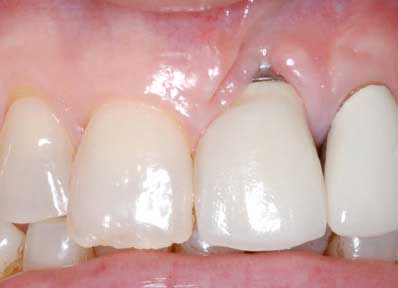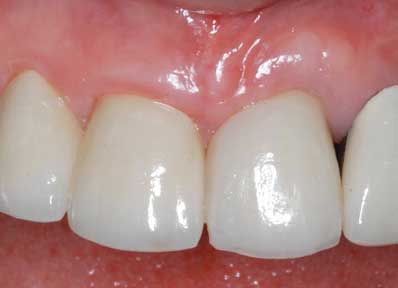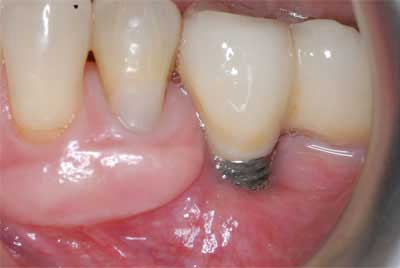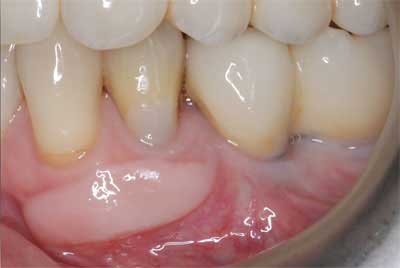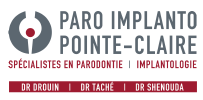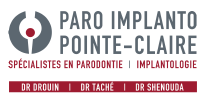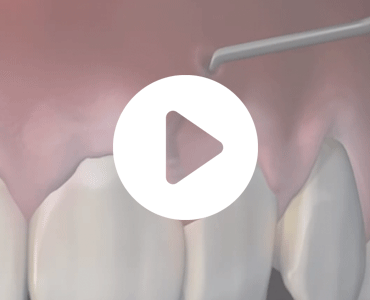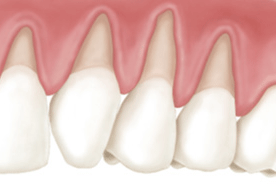
Symptoms
A gingival recession is visible to the naked eye. The affected tooth appears longer and the exposed root surface is yellow compared to the enamel which is white.
In a lot of cases, teeth affected by recession are asymptomatic. In certain individuals, the root exposure can lead to pain to:
- cold
- hot
- touch
- brushing
this is what we call dentinal hypersensitivity.
Certain factors will favor the presence of recessions. For example, certain individuals have a very thin and fragile band of gingiva to start with. For others, the gingiva is quite thick and abundant. Other factors that can favor the development of recessions are: malpositioned teeth, orthodontic tooth movement, muscular attachments and dental restorations.
Treatments
It is not all teeth with recession that require to be treated. For example, a slight recession with an adequate quantity of keratinized tissue, no hypersensitivity or esthetic issues does not necessitate any treatment other than to control the factors that lead to the problem (ie. excessive traumatic brushing).
THE CLINICAL SITUATIONS REQUIRING TREATMENT (GINGIVAL GRAFTING) ARE :
- When the quantity and quality of keratinized gingiva are inadequate
- When there is uncontrollable dentinal hypersensitivity
- When the recession is causing an esthetic problem
- When the quantity and quality of keratinized gingiva are inadequate prior to orthodontic treatment. This will depend on the quality of the gingiva and on the direction of the tooth movement.
- When the keratinized gingiva is of poor quality prior to dental restorations (fillings, crowns, veneers and dental implants)
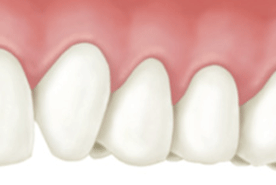
Laser (Laser assisted new attachment procedure: LANAP)
The Nd:YAG Laser treats gum disease in an efficient and predictable way. The name of the technique used is LANAP. This laser treatment consists in disinfecting the periodontal pocket and stimulating the reattachment of the gums to the teeth; thereby encouraging the regeneration of tissues surrounding the teeth. This non-surgical technique is a predictable and rapid treatment (two appointments) to control the gum disease. As opposed to the traditional surgical approach, this treatment reduces gingival recession and dental hypersensitivity that follows therapy.
Pinhole Surgical Technique
The Chao Pinhole Surgical Technique is a scalpel-free technique to correct gingival recession. Through a small hole made by a needle, PARO IMPLANTO specialists make a little entry point in the gum tissue near the affected zone. Through this opening, they use specially designed instruments to gently loosen the gum tissue and glide it over the receded part of the tooth. Collagen strips are then placed to facilitate the healing.
Since there is no cutting or stitching, patients can expect minimal post-surgery symptoms.
Treatment of recessions
« At the Clinic of Periodontics and Implantology , we have developed expertise in the area of gingival grafts with over 2000 teeth treated per year.”
CONNECTIVE TISSUE GRAFT
This technique is the one we use in more than 95% of the cases we treat.
It consists of taking connective tissue (the tissue under the superficial part of the skin) from the palate and stabilizing it under the gums at the site affected by the recession. With this technique, a maximal amount of the exposed root will be covered; thereby re-establishing esthetics and function. In addition, this specific procedure results in very little discomfort at the donor site (palate) compared to the conventional free gingival graft.
FREE GINGIVAL GRAFT
This grafting technique is the first to have been used to stabilize gingival recessions. It consists of taking a piece of tissue from the palate and to stabilize it at the base of the recession in order to improve the quantity and quality of the keratinized gingiva. This procedure does not typically result in great recession coverage. The esthetic result is usually less than optimal and the donor site (palate) is generally very uncomfortable in the days following the procedure. This type of grafts is used in less than 1% of the cases we treat at the clinic.
ALLOGRAFT (ALLODERM)
This technique is quite similar to the connective tissue graft, except that it does not require harvesting tissue from the palate. This material is actually taken from a human donor. Its use is very safe since all the cellular elements have been removed from the graft. In certain clinical situations, the result will be similar to the connective tissue graft. However, the healing will be slower and since there is no vitality to the tissue, it cannot be used in all scenarios and expected to perform as well as the connective tissue graft. The real advantage of this graft is that there is no donor site.
Before and after intervention
Example of a healthy gum
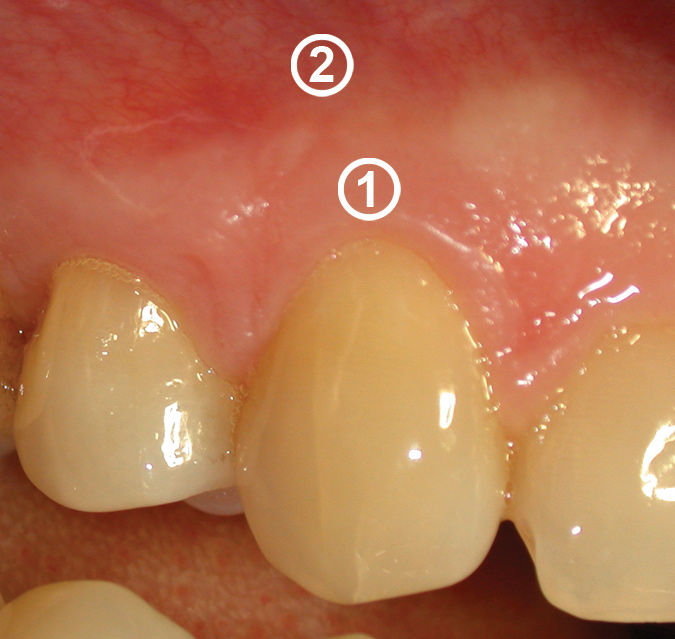
Arcade top
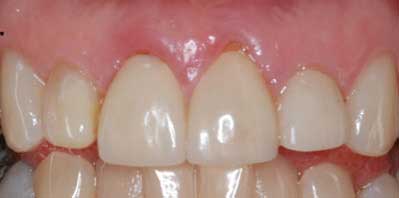
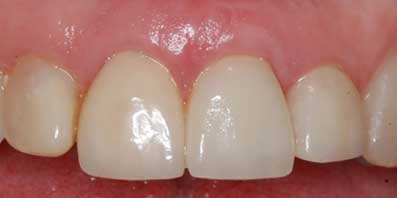
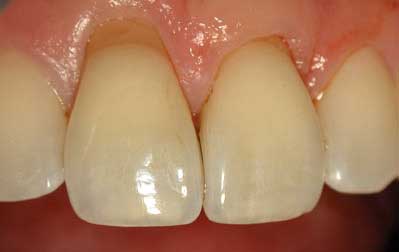
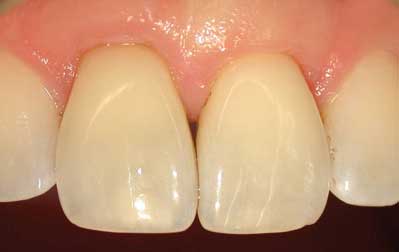
Arcade previous low
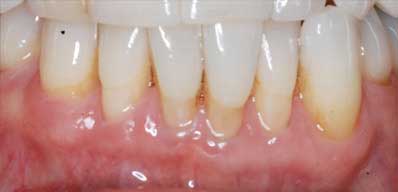
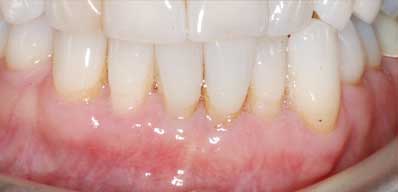
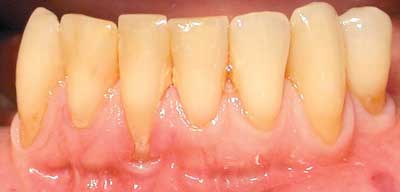
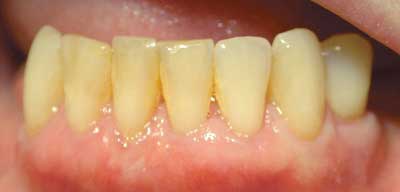
Arcade low posterior
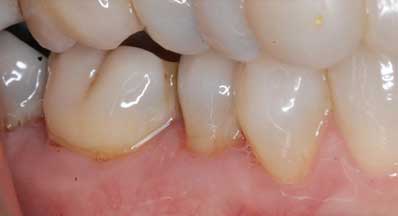
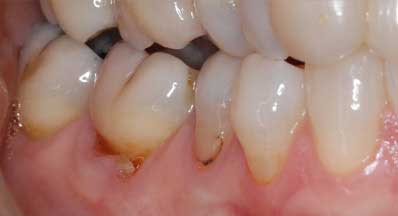
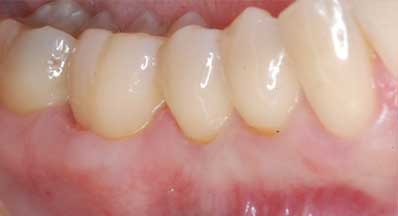
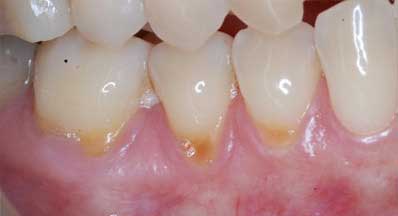
Lingual recession
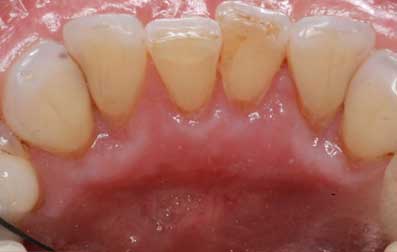
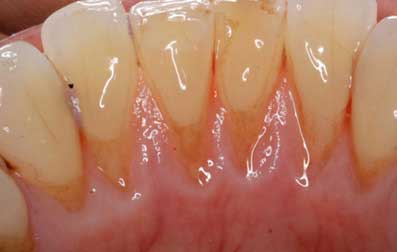
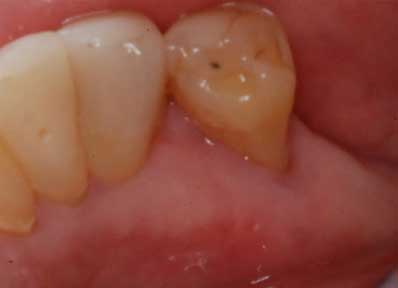
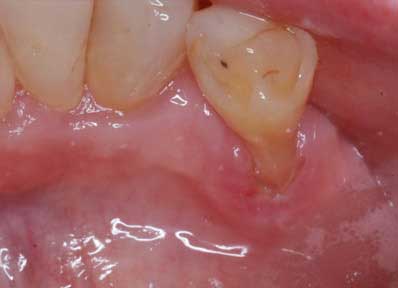
Recession on dental implant
